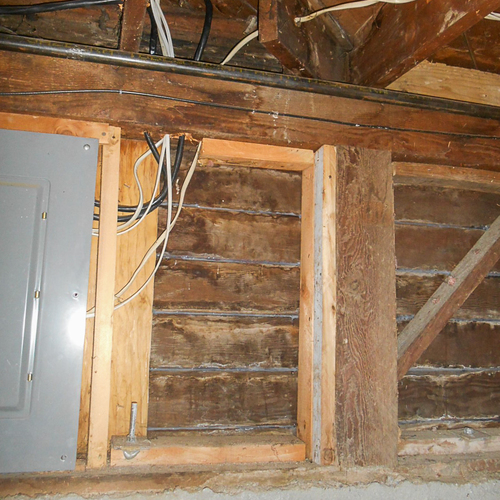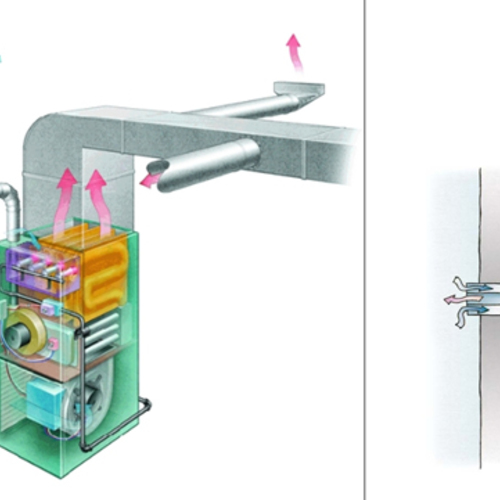
Oh, how the news media love the “thermostat wars” between men and women. It’s a good source of stories based on conventional wisdom and the occasional (faulty or incomplete) research paper. The utility companies want in on the action, too. I’ve seen television ads for gas companies trying to convince viewers that just switching fuels will eliminate the battle over the thermostat. But do women really need warmer temperatures than men?
Decades of research on thermal comfort
Guess what. The idea that men and women have widely different internal thermostats is dead wrong. Let’s clear this up with the summary from the ASHRAE Handbook of Fundamentals. Based on many decades of research, they say:
The experiments show that men and women prefer almost the same thermal environments. Women’s skin temperature and evaporative loss are slightly lower than those for men, and this balances the somewhat lower metabolism of women. The reason that women often prefer higher ambient temperatures than men may be partly explained by the lighter clothing often worn by women.
The image above of two newscasters talking about the “Battle of the Thermostat” couldn’t make the point any better. The man is wearing a button down shirt, tie, and coat (and probably an undershirt as well) while the woman is a wearing a sleeveless blouse or dress.
Six factors of comfort
ASHRAE’s thermal comfort standard lists six factors that affect our comfort. They are:
- Metabolic rate
- Clothing insulation
- Air temperature
- Radiant temperature
- Air speed
- Humidity
The first two are personal factors. Metabolic rate is a measure of your energy use. Recall that your body is a heat engine, turning fuel into mechanical energy and heat. It’s similar to a power plant turning fuel (e.g., coal or gas) into heat that spins a turbine that generates electricity. Not all the heat can turn into usable energy, however, so a human body and a power plant both must deal with that excess heat somehow. Remember, you need cooling! And the higher your metabolic rate, the more cooling you need. Your metabolic rate depends on the nature of your particular body—everyone is different—and on your activity level.
Clothing, of course, insulates the body from its surroundings. In winter, that’s a good thing. In summer, it can slow down the body’s cooling process. We all know that when you’re too warm, you can take off excess clothing to cool off. No mystery here.
The last four are environmental factors and don’t affect men any differently than they affect women. The ASHRAE statement above makes that clear.
So, the next time you’re in a room with a man who happens to feel warmer than a woman, don’t automatically jump to the conclusion that it’s simply because he’s a man and needs lower air temperatures to feel cool enough. When you account for all of the factors of comfort, both personal and environmental, the research is clear. So, do women need warmer temperatures than men? No.
Note: If you’d like to dive into this topic and really learn how to apply the principles of thermal comfort to buildings, get yourself a copy of Robert Bean’s free book, Thermal Comfort Principles and Practical Applications for Residential Buildings. (Yes, it’s free!)
_________________________________________________________________________
Allison Bailes of Atlanta, Georgia, is a speaker, writer, building science consultant, and the founder of Energy Vanguard. He has a PhD in physics and writes the Energy Vanguard Blog. He is also writing a book on building science. You can follow him on Twitter at @EnergyVanguard.
Weekly Newsletter
Get building science and energy efficiency advice, plus special offers, in your inbox.













11 Comments
Ashrae's research seems to contradict every other study I have read, and certainly contradicts my (anecdotal) experience:
https://www.mcgill.ca/oss/article/health/i-am-woman-why-am-i-always-so-cold
https://www.theatlantic.com/health/archive/2019/05/warm-offices-women-productivity/589966/
https://inews.co.uk/news/long-reads/the-evolutionary-reasons-why-women-feel-the-cold-more-than-men-1239135
Regardless of potential gender-specific differences, I do find that it's essential to keep typical clothing in mind when determining the temperature of any shared space.
Case in point, I work in a software development office and we moved into a new building 10 years ago. When we first moved in, the constant complaint was how frigid it was. You'd see people wearing jackets and others would literally stuff the AC vents with paper towel to stifle the flow.
The building folks finally did a survey after many many complaints and ultimately adjusted the temperature to a notable number of degrees higher. The problem? They were setting the initial temperature to the "standard" office temperatures, which assumed a bunch of guys in full multi-layer suits. We're modern day software geeks -- the standard uniform in our office is shorts or jeans and a t-shirt!
Does it really matter if ASHRAE or the AMA come up with 1,000 studies that "prove" men and women have legitimate "thermostat wars"? The bottom line is that when your wife or girlfriend asks you to raise the temperature, you do it... or risk sleeping in the dog house. No studies needed! 😁
Seems to me the elephant in the room is body weight, is it not most often the skinny gal in a short skirt with a space heater under her desk complaining about being cold?
Walta
As a skinny guy who shared a house with a couple other very much not skinny friends after college, this. I was always feeling cold, while they'd complain about the heat any time the temperature approached 70. We all dressed similarly, they just had an extra layer of built-in insulation!
The other factor, of course, is acclimatization -- I think people can get used to more than they think, usually. Prime example is observable seasonally -- every spring the first 50 degree day feels wonderfully balmy, but a few months later, the same 50 degrees is a chilly fall day.
When my mom was in the workforce, she had a good point: while men wear long pants, thick socks and solid shoes or boots in winter, women often wear skirts, thin socks (or no socks) and lightweight shoes. Air near the floor is colder than air higher in the room. I'm just guessing but I bet the coanda effect pushes drafts along floors. So although it's not biologically based, choice of clothing seems to have an effect. Fortunately that's easily addressed. (Or is it?)
I'm not in a position to intelligently parse all the research, but what worries me is that it allows us to dismiss women's concerns about their environment by telling them they have no scientific basis - and historically that has happened all too often. So if ASHRAE is going to provide a basis for that, it better be unassailable - which I'm not at all convinced is the case.
Agreed. Interesting that bodily autonomy is contested in something as inherently subjective as thermal comfort.
I generally favor micro-zoning which is easy to do with hydronics. Each room has its own thermostat, including each bathroom. This allow for individual preference, plus for warm feet on these cool fall mornings when the floor is heated!
More productive would be to discuss solutions. Like localized radiant panels.
Want to take a closer look?
(1) I am a scientist and haven't pored over the statistics in this article, but at first glance, the approach looks sound. The study finds women's performance suffers more than men's does at lower temperatures: https://journals.plos.org/plosone/article?id=10.1371/journal.pone.0216362. I think Joe Allen summarized this well in his "Healthy Buildings" book. When I was a postdoc at the H'd School of Public Health my male advisor allowed me (female) to keep the temp in my office ~8-10 F higher than elsewhere (it didn't help my office had a very cold window).
(2) Calling "clothing insulation" a "personal factor" totally denies the many situations in which women are strongly pressured or required by their jobs or social positions to wear lighter weight clothing. I have long, long sought formal wear that keeps me warm enough, even in hotel conference spaces with the AC blasting in summer (cold so men can wear their suits). Really warm, well cut professional clothes just don't exist. Formal social wear is dramatically worse. Either we build for some culture-less occupants or we acknowledge that there will be differences in how women perceive temperature, even beyond physiologic differences.
Log in or create an account to post a comment.
Sign up Log in